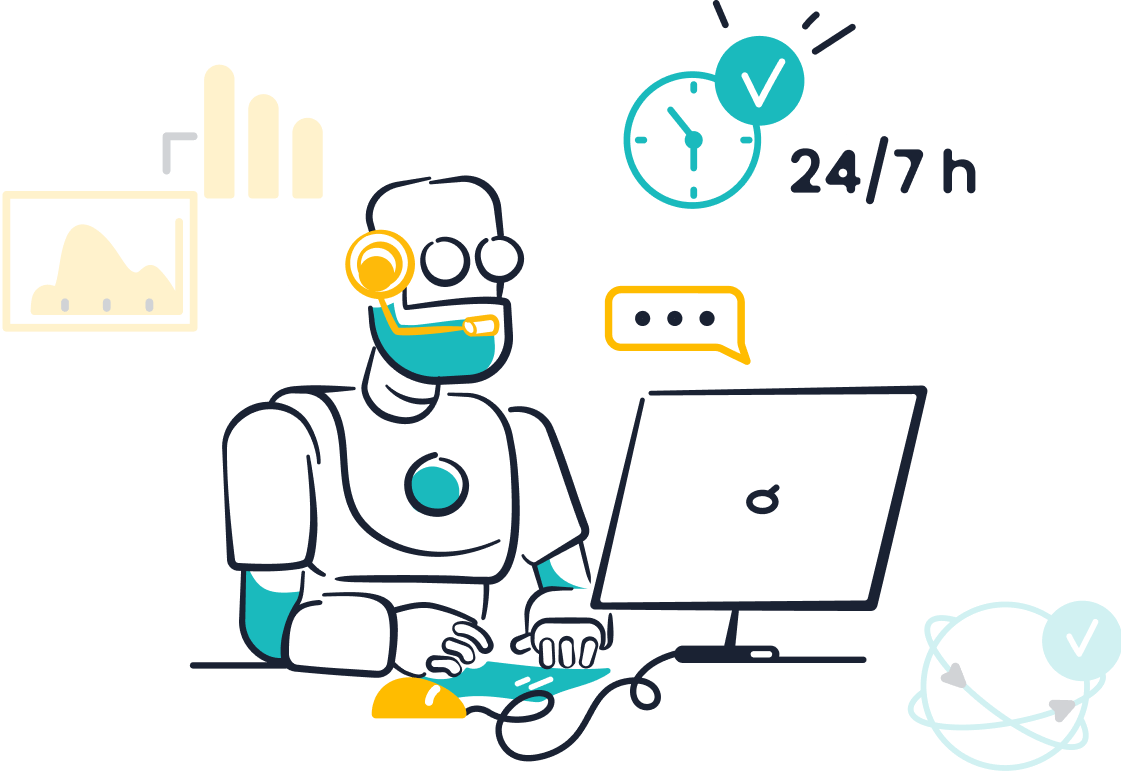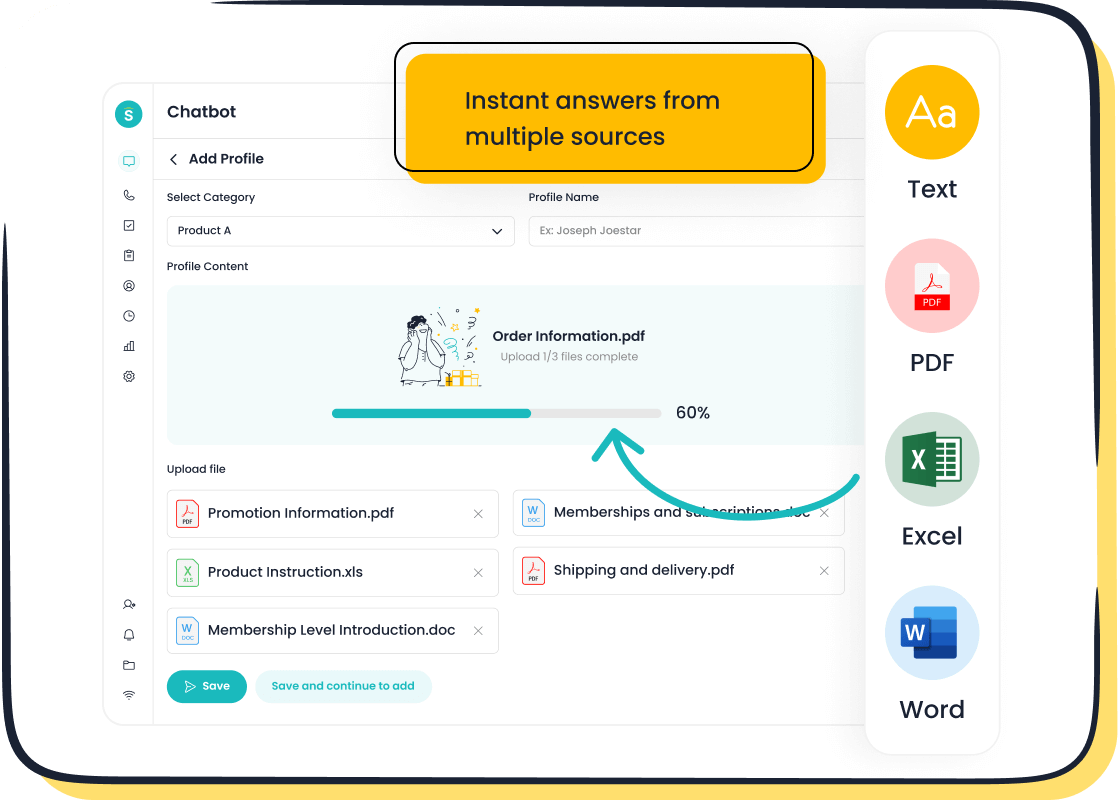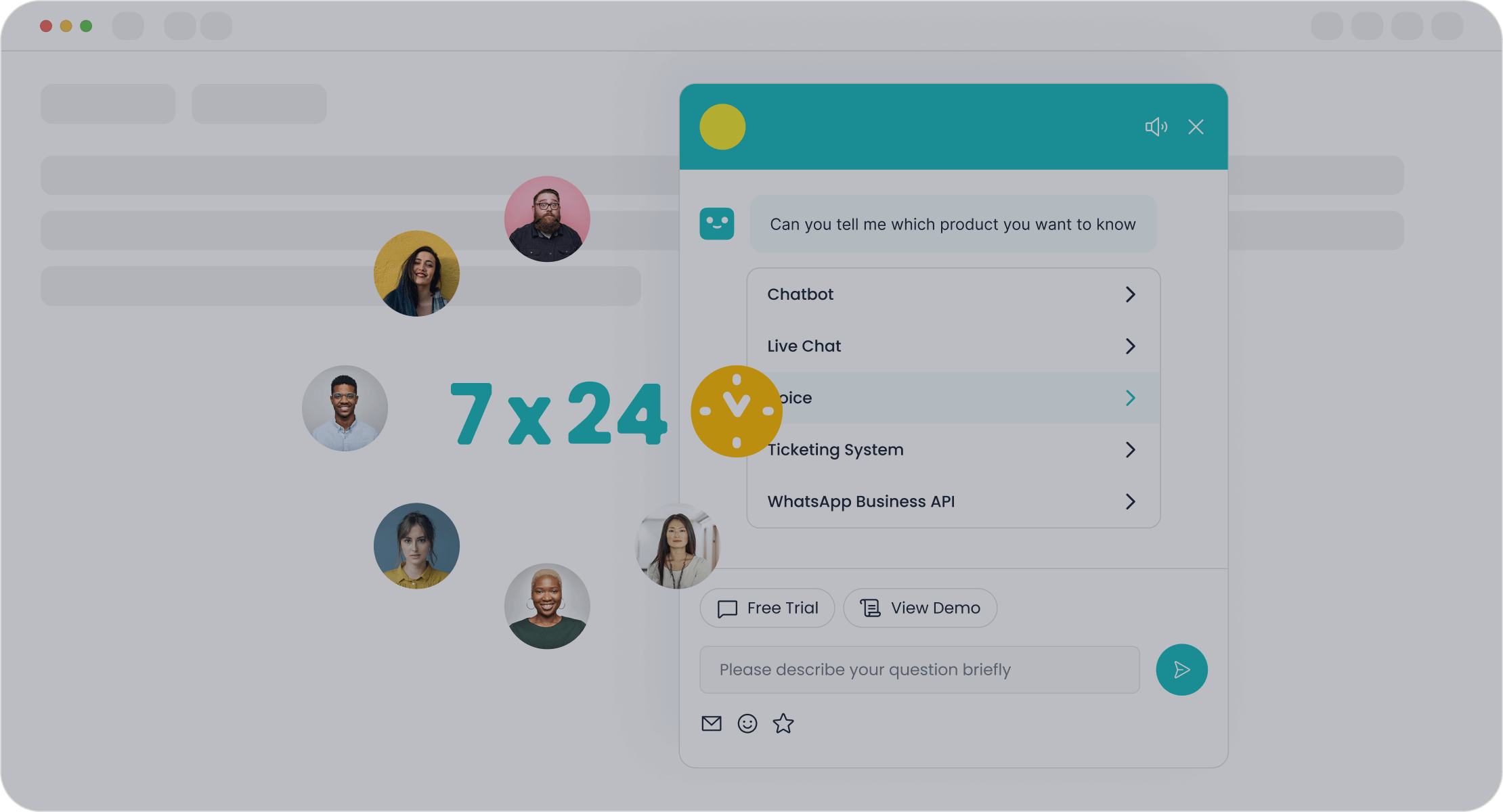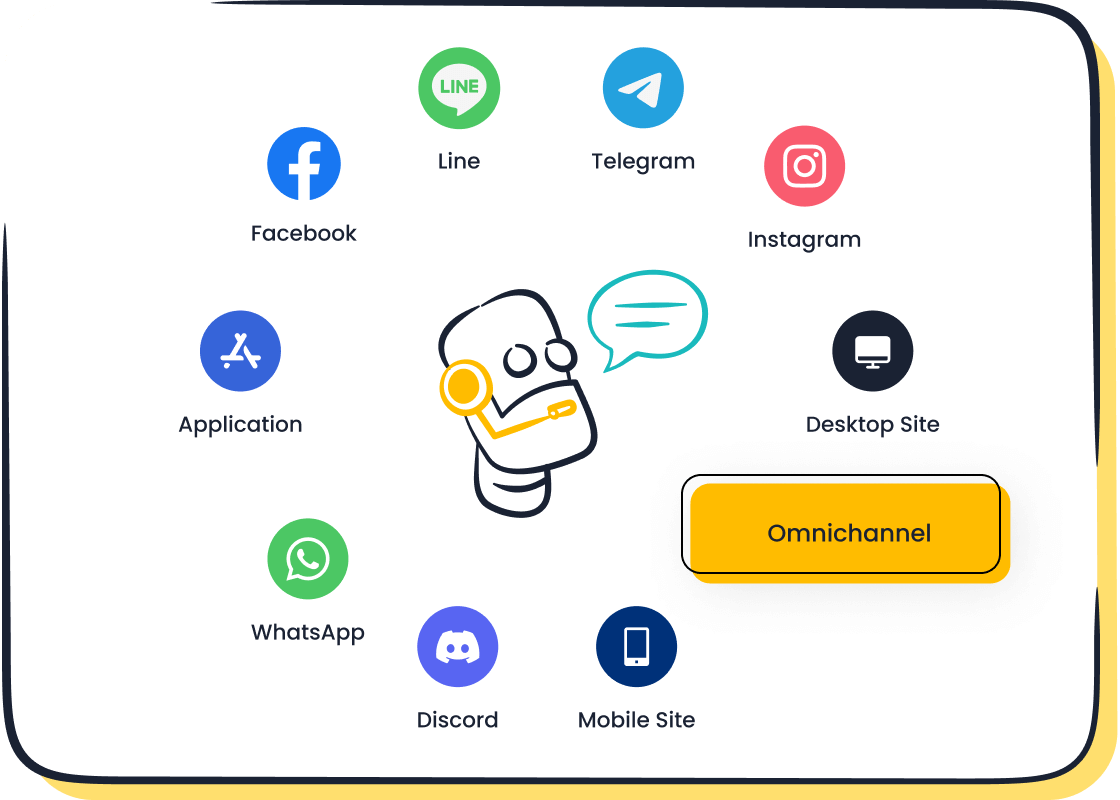10 Strategies to Reduce After Call Work Time in 2025

After Call Work (ACW) refers to the tasks agents complete after ending a customer interaction. These tasks often include updating records, summarizing conversations, and scheduling follow-ups. While essential, After Call Work can consume valuable time, reducing agent availability for new calls. This impacts both operational efficiency and customer satisfaction.

Reducing After Call Work offers several benefits. Agents can assist more customers, lowering queue times and improving satisfaction scores. Streamlined processes also enhance service quality and reduce operational costs. Tools like Sobot's AI Chatbot automate repetitive tasks, enabling agents to focus on meaningful interactions. By optimizing After Call Work with Sobot, you can create a seamless experience for your customers while boosting efficiency.
Understanding After Call Work (ACW)
What is After Call Work?
After Call Work (ACW) refers to the tasks agents perform immediately after a customer interaction. These tasks ensure accurate documentation and follow-up actions, which are essential for maintaining service quality.
Common tasks included in ACW
ACW tasks vary across industries but often include:
- Dispositioning calls to categorize the interaction.
- Ensuring compliance measures are met.
- Sending surveys or questionnaires to gather feedback.
- Logging call notes and summarizing key points.
- Executing required actions, such as resolving issues or escalating cases.
- Assigning follow-ups to the appropriate agents.
- Updating customer relationship management (CRM) systems with relevant details.
- Analyzing customer feedback to improve future interactions.
These tasks, while necessary, can become time-consuming without efficient processes or tools.
How ACW impacts agent productivity and customer experience
ACW significantly affects both agent productivity and customer satisfaction. The following table highlights its measurable effects:
| Effect | Description |
|---|---|
| Reduced customer wait time | Longer ACW time increases hold times for incoming calls, negatively impacting customer satisfaction. |
| Improving agent performance | Tracking ACW identifies training needs and process inefficiencies, boosting agent productivity. |
| Increased productivity | Immediate documentation prevents information loss, enhancing agent efficiency. |
| Improved Customer Service Outcomes | Efficient ACW processes improve first-call resolution rates and reduce wait times. |
By optimizing ACW, you can enhance both operational efficiency and customer satisfaction.
Why Reducing ACW is Crucial
The link between ACW and operational efficiency

High ACW times directly impact your contact center's efficiency. When agents spend excessive time on post-call tasks, they handle fewer calls, leading to longer queues. This reduces overall productivity and increases operational costs. Tools like Sobot's AI Chatbot can automate repetitive ACW tasks, such as logging notes or sending follow-ups, allowing agents to focus on more complex interactions.
The cost of excessive ACW time for businesses
Excessive ACW time not only affects efficiency but also harms customer satisfaction. Longer hold times frustrate customers, leading to negative experiences. Tracking ACW can help identify workflow bottlenecks that contribute to these delays. For example, integrating Sobot's CRM solutions with your contact center can streamline processes, reduce manual work, and improve response times. By reducing ACW, you can create a more seamless experience for both agents and customers.
Challenges of Managing After Call Work in 2025
Increasing Complexity in Customer Interactions
Diverse customer needs and expectations
Customer interactions have become more complex as expectations rise. Customers now demand personalized solutions and seamless experiences across multiple channels. Managing these interactions requires agents to adapt quickly and deliver consistent service. Optimizing customer interaction processes helps businesses identify issues, gather feedback, and build lasting relationships. However, unstructured notes and data silos can hinder insight extraction, making it harder to meet these expectations. This complexity often inflates ACW time, reducing productivity and increasing operational costs.
The pressure on agents to multitask effectively
Agents face immense pressure to handle multiple tasks during and after calls. They must document conversations, update systems, and ensure compliance while maintaining accuracy. Manual workflows slow down these processes, leading to delays and errors. This pressure can cause frustration and mistakes, ultimately impacting customer satisfaction. Automating repetitive tasks with tools like Sobot's AI Chatbot can alleviate this burden, allowing agents to focus on delivering quality service.
Inefficient Processes and Tools
Manual workflows and their limitations
Manual workflows remain a significant challenge in ACW management. Tasks like logging notes, categorizing calls, and sending follow-ups are time-consuming and prone to errors. These inefficiencies delay follow-up actions and reduce agent productivity. Traditional methods often overlook nuances in customer interactions, limiting actionable insights. Automating these processes with integrated tools can streamline workflows and minimize errors, improving overall efficiency.
The need for integrated systems
Disconnected systems create data silos, making it difficult for agents to access customer information quickly. This lack of integration leads to inconsistencies and longer ACW times. Integrated solutions, such as Sobot's CRM and contact center tools, unify data and simplify workflows. These systems enable agents to complete tasks faster and with greater accuracy, enhancing both productivity and customer satisfaction.
Agent Burnout and Retention Issues
How excessive ACW contributes to stress
Excessive ACW time increases stress levels for agents. The constant pressure to complete tasks quickly while maintaining accuracy can lead to burnout. Stress not only affects performance but also reduces job satisfaction. Providing agents with tools that automate repetitive tasks can help reduce this stress and improve focus.
The impact on employee turnover rates
High stress levels and burnout contribute to higher turnover rates among agents. Replacing agents involves significant costs for hiring and training. By reducing ACW time and streamlining workflows, you can create a more supportive work environment. This approach improves retention rates and reduces operational costs, ensuring a more stable and efficient workforce.
10 Strategies to Reduce After Call Work Time
Automate Repetitive Tasks with AI
Leveraging tools like Sobot's Chatbot for automation

Automation is a game-changer in effective ACW management. Tools like Sobot's AI Chatbot can handle repetitive tasks such as logging call details, categorizing interactions, and sending follow-ups. This reduces the manual workload for agents, allowing them to focus on more complex customer interactions. For instance, a global telecom company reduced its ACW by 30% using AI-powered solutions, demonstrating how automation can significantly improve efficiency. By automating after-call work, you can streamline processes and achieve reduced wait times for customers.
Automating follow-ups and data entry
AI tools excel at automating post-call tasks like follow-ups and data entry. Sobot's Chatbot, for example, integrates seamlessly with CRM systems to update customer records in real time. This eliminates the need for manual data entry, reducing errors and saving time. Automating these tasks not only boosts agent productivity but also ensures accurate documentation, which is critical for maintaining high service standards.
Implement Call Summarization Tools
Benefits of real-time transcription
Call summarization tools equipped with real-time transcription capabilities can drastically reduce ACW time. These tools automatically generate call summaries, eliminating the need for manual note-taking. They also provide real-time sentiment analysis, helping you gauge customer satisfaction instantly. For example, integrating these tools with CRM systems streamlines updates, allowing agents to focus on delivering quality service.
| Benefit | Description |
|---|---|
| Automation of tasks | Reduces manual data entry and updates, allowing agents to focus on calls. |
| Real-time sentiment analysis | Provides immediate feedback on customer interactions, enhancing service quality. |
| Integration with CRM systems | Streamlines the process of updating customer records, saving time for agents. |
How summarization tools save time
Call summaries generated by AI tools save time by providing detailed and accurate records instantly. This reduces the need for agents to revisit calls for documentation, enabling them to handle more customer interactions. Automated summaries also ensure consistency, which is vital for effective ACW management.
Train Agents for Efficiency
Techniques for concise note-taking
Training agents in concise note-taking is an essential after-call work strategy. Clear and structured notes reduce the time spent on documentation and improve the accuracy of customer records. Targeted coaching sessions can help agents eliminate redundant workflows and adopt best practices for ACW. This not only enhances their efficiency but also contributes to reduced ACW time.
Using templates to streamline documentation
Providing agents with standardized templates simplifies the documentation process. Templates ensure consistency and reduce confusion, enabling agents to complete post-call tasks quickly. Regular training on these templates helps agents adapt to evolving customer interaction needs, further improving their productivity. Establishing clear ACW protocols also ensures that agents handle tasks efficiently, minimizing errors and delays.
Use CRM and Contact Center Integrations
How integrated systems reduce manual work

Integrated CRM and contact center systems simplify after call work by reducing manual tasks. These systems allow agents to update customer information within a single platform, eliminating the need to switch between multiple applications. This reduces errors caused by manual data entry and ensures accurate records. For example, integrating Sobot's CRM with your contact center tools enables real-time syncing of call data with customer profiles. This eliminates redundant tasks and improves record accuracy.
Additionally, integrated systems streamline the gathering and organizing of customer information. Agents can access real-time data during calls, reducing the need for manual note-taking. This not only saves time but also allows agents to focus on delivering quality customer interactions. By automating after-call work, you can reduce ACW time and improve operational efficiency.
Examples of effective CRM integrations
Effective CRM integrations include features like pre-filled templates and automated data syncing. For instance, Sobot's CRM integration allows agents to log call summaries and update customer records seamlessly. Real-time transcription tools integrated with CRM systems capture key details during calls, reducing the need for manual documentation. These integrations also support automation of routine tasks, such as follow-ups, ensuring consistency and saving time. By adopting these ACW best practices, you can enhance both agent productivity and customer satisfaction.
Standardize Post-Call Workflows
Benefits of clear ACW guidelines
Clear ACW guidelines ensure consistency and efficiency in post-call tasks. Standardized workflows help agents complete tasks quickly and accurately, reducing ACW time. For example, using pre-defined templates for common call types minimizes confusion and speeds up documentation. Establishing clear protocols also reduces errors, improving first call resolution rates. By implementing these guidelines, you can reduce after call work and enhance overall service quality.
Examples of standardized processes
Standardized processes include automation of routine tasks and the use of real-time transcription tools. For example, Sobot's solutions offer pre-filled templates and integrated CRM tools to streamline updates. These processes ensure agents handle tasks efficiently, reducing time spent on post-call documentation. Real-time transcription tools capture call summaries during interactions, eliminating the need for manual note-taking. These examples highlight the importance of effective ACW management in improving productivity.
Leverage Speech Analytics
Identifying key call details automatically
Speech analytics uses AI-powered natural language processing (NLP) to analyze recorded conversations. This technology transcribes spoken words into text and identifies key topics and sentiments. Insights are presented through user-friendly dashboards, making it easy for agents to understand and act on the analysis. By identifying key call details automatically, you can reduce ACW time and improve efficiency.
Reducing the need for manual review
Speech analytics eliminates the need for manual review by capturing and analyzing call summaries in real time. This reduces the time agents spend revisiting calls for documentation. For example, Sobot's AI tools provide detailed call summaries instantly, allowing agents to focus on customer interactions. Automating post-call contact tasks with speech analytics ensures accurate records and faster resolution times, enhancing overall service quality.
Monitor and Optimize Agent Performance
Using performance metrics to identify bottlenecks
Tracking performance metrics is essential for identifying bottlenecks in after-call work. Regularly measuring ACW times helps you spot trends and inefficiencies. For example, an ACW timer can track how long agents spend on post-call tasks, revealing areas for improvement. Detailed note-taking during calls also reduces wrap-up time, ensuring smoother workflows. Continuous monitoring of ACW procedures allows you to address workflow gaps promptly. By investing in automation tools like Sobot's AI Chatbot, you can streamline repetitive tasks and save time. These steps not only improve operational efficiency but also enhance agent performance.
Providing feedback and coaching for improvement
Feedback and coaching play a vital role in improving agent performance. Targeted coaching sessions can help agents develop better post-call processing skills, such as using shorthand or templates for documentation. Providing constructive feedback based on performance metrics ensures agents understand their strengths and areas for improvement. Training on productivity-boosting technology, like integrated CRM systems, further enhances efficiency. By fostering a culture of continuous learning, you can reduce ACW and improve first call resolution rates.
Introduce Gamification for ACW Efficiency
Motivating agents through gamified processes
Gamification introduces an element of fun and competition to your contact center, motivating agents to perform better. For instance, awarding points for each follow-up or badges for closed deals encourages agents to complete tasks efficiently. Leaderboards showcasing top performers in ACW efficiency or customer satisfaction scores inspire healthy competition. Recognizing and rewarding winners with trophies or incentives boosts morale and participation. This approach not only motivates agents but also improves overall performance.
Examples of gamification in contact centers
Gamification techniques can transform ACW management. Individual scoring for resolution rates or team battles on sales conversion percentages are effective strategies. For example, you could implement a "Who Can Close More Deals?" challenge, where agents earn points for follow-ups and badges for closed deals. The agent with the highest score receives a reward, fostering engagement and efficiency. These methods make ACW tasks more engaging, leading to measurable performance improvement.
Schedule Regular Process Reviews
Identifying inefficiencies in workflows
Regular process reviews are crucial for identifying inefficiencies in ACW workflows. Analyzing performance data helps you pinpoint bottlenecks and areas for improvement. For example, if agents struggle with manual data entry, integrating tools like Sobot's CRM can simplify the process. Reviewing workflows ensures your systems remain optimized for evolving customer needs. This proactive approach reduces ACW and enhances agent productivity.
Adapting processes to evolving needs
Customer expectations and business requirements change over time. Regularly updating your ACW processes ensures they align with these evolving needs. For instance, adopting advanced tools like Sobot's AI Chatbot can automate repetitive tasks, saving time and reducing errors. Training agents on new technologies and workflows keeps them prepared for future challenges. By staying adaptable, you can maintain high performance and customer satisfaction.
Invest in Agent Well-Being
Reducing stress to improve focus
Stress can significantly impact an agent's ability to focus and perform efficiently. When agents face high workloads and tight deadlines, they often experience burnout. This not only affects their mental well-being but also reduces their productivity. Burnout leads to higher turnover rates, which increases hiring and training costs. New team members require time to adapt and become productive, which can extend after-call work (ACW) times.
To reduce stress, you should create a supportive work environment. Offering flexible schedules and manageable workloads can help agents maintain a healthy work-life balance. Additionally, providing regular breaks during shifts allows them to recharge and stay focused. For example, companies that implement wellness programs often see improved employee satisfaction and reduced stress levels. A happier workforce directly translates to better performance and shorter ACW times.
Providing tools and resources for support
Equipping agents with the right tools and resources is essential for their success. Outdated systems and manual workflows can frustrate agents and slow down their tasks. By investing in advanced technologies, you can empower agents to work more efficiently. For instance, Sobot's AI Chatbot automates repetitive tasks like data entry and follow-ups, reducing the burden on agents. This allows them to focus on more meaningful interactions with customers.
Training programs also play a crucial role in supporting agents. Regular skill-building sessions help them stay updated on best practices and new tools. Providing access to a knowledge base ensures they can quickly find answers to customer queries. When agents feel supported, they perform better and complete ACW tasks faster. This not only improves their efficiency but also enhances the overall customer experience.
The Role of Technology and AI in Optimizing ACW
AI-Powered Automation Tools
Examples of tools like Sobot's Chatbot

AI-powered automation tools have revolutionized how you can manage ACW. Tools like Sobot's Chatbot automate repetitive tasks, such as logging call notes and scheduling follow-ups. These tools also reduce human error, ensuring accurate documentation. By investing in conversational AI, businesses have achieved measurable results, including improved agent efficiency and reduced Average Handling Time (AHT). For example, Sobot's Chatbot integrates with CRM systems to streamline workflows, saving agents valuable time and allowing them to focus on complex customer needs.
How AI reduces manual workload
AI significantly reduces the manual workload associated with ACW. It automates tasks like data entry and follow-up scheduling, which traditionally consume a lot of time. Conversational AI tools analyze interactions in real time, categorizing calls and updating records without human intervention. This not only improves agent productivity but also ensures consistent customer experiences. For instance, companies using AI-powered tools have reported a 30% reduction in AHT and higher customer satisfaction scores.
Real-Time Assistance for Agents
Benefits of AI-powered agent assist tools
Real-time assistance tools powered by AI provide agents with instant support during calls. These tools check script adherence, offer recommendations for handling objections, and suggest relevant knowledge-base articles. Alerts for hold time, customer sentiment, and call duration keep agents informed, enabling them to make quick decisions. By automating repetitive tasks, such as creating call summaries, these tools reduce ACW and enhance overall efficiency.
Enhancing accuracy and speed during calls
AI-powered tools streamline tasks like updating CRM systems and generating call summaries. This reduces the time agents spend on post-call work, allowing them to handle more interactions. For example, real-time agent assist tools ensure accurate documentation by capturing key details during calls. This not only speeds up workflows but also minimizes errors, leading to better customer experiences and improved operational efficiency.
Predictive Analytics for Workflow Optimization
Identifying trends with predictive analytics
Predictive analytics uses AI to identify trends in customer interactions, helping you optimize workflows. By analyzing historical data, these tools predict common issues and recommend solutions. This allows agents to prepare for recurring challenges, reducing ACW time. For instance, predictive analytics can highlight patterns in customer complaints, enabling you to address them proactively.
Improving resource allocation and planning
Predictive analytics also improves resource allocation by forecasting call volumes and agent workload. This ensures you have the right number of agents available at peak times, reducing wait times and ACW. Tools like Sobot's AI solutions provide actionable insights, helping you plan more effectively. By leveraging these technologies, you can enhance both agent performance and customer satisfaction.
Reducing after call work is essential for improving efficiency and customer satisfaction in modern contact centers. Streamlining ACW processes allows agents to handle more interactions, reduce wait times, and enhance service quality. The 10 strategies discussed, such as automating repetitive tasks, using integrated CRM systems, and providing real-time assistance, offer practical solutions for optimizing workflows.
For example, automating post-call surveys can save time by gathering feedback without manual input. Similarly, tools like Sobot's Chatbot can handle routine tasks like data entry, enabling agents to focus on complex customer needs. By adopting these strategies, you can achieve measurable improvement in both operational efficiency and customer satisfaction.
💡 Tip: Regularly review and adapt your ACW processes to meet evolving customer expectations. Leveraging advanced tools like Sobot's solutions ensures your contact center stays ahead in delivering exceptional service.
FAQ
What is the ideal After Call Work (ACW) time for contact centers?
The ideal ACW time varies by industry but typically ranges between 30 seconds to 2 minutes. Reducing ACW time below this range may compromise quality. Tools like Sobot's AI Chatbot help you achieve the perfect balance by automating repetitive tasks and improving efficiency.
How does automation reduce ACW time?
Automation tools like Sobot's Chatbot handle repetitive tasks such as logging notes, categorizing calls, and scheduling follow-ups. This reduces manual work, saving agents up to 30% of their time. For example, OPPO achieved an 83% chatbot resolution rate, significantly cutting ACW time.
Can reducing ACW improve customer satisfaction?
Yes! Shorter ACW times mean agents become available faster, reducing customer wait times. Efficient ACW processes also ensure accurate documentation, leading to better service quality. For instance, Sobot's integrated CRM tools streamline workflows, enhancing both agent productivity and customer satisfaction.
What are the best tools for managing ACW?
The best tools include AI-powered solutions like Sobot's Chatbot and CRM integrations. These tools automate data entry, follow-ups, and call summaries. They also provide real-time assistance, ensuring agents complete tasks faster and more accurately. Learn more about Sobot's solutions here.
How can I train agents to handle ACW more efficiently?
You can train agents to use concise note-taking techniques and standardized templates. Regular coaching sessions and access to tools like Sobot's AI Chatbot improve their efficiency. For example, templates reduce confusion, while automation tools handle repetitive tasks, allowing agents to focus on meaningful interactions.
💡 Tip: Combine training with advanced tools like Sobot's Chatbot to maximize efficiency and reduce ACW time.
See Also
A Guide to Successfully Implementing Omnichannel Contact Centers
Essential Practices for Effective Call Center Quality Management
Best Cloud Contact Center Solutions to Consider in 2024
Understanding the Efficiency of Call Center Automation
Enhancing Call Center Performance Through Effective Monitoring
